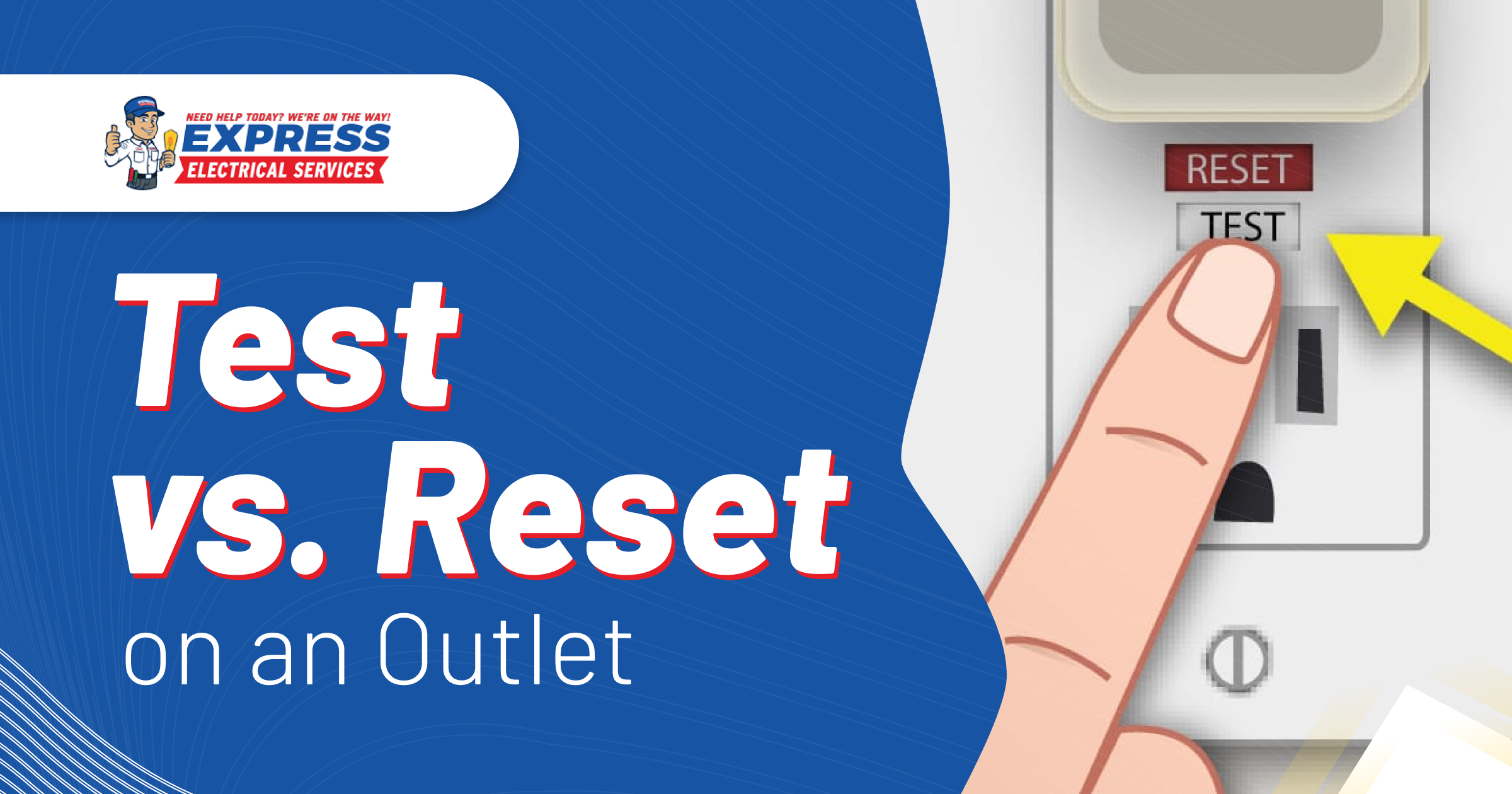Test vs. Reset on an Outlet

If you have outlets with “test” and “reset” buttons, these are ground fault circuit interrupters (GFCIs). A GFCI outlet is designed to prevent electric shock. It will turn the circuit off in an instant if a ground fault is detected. A GFCI outlet does a good job at measuring and reacting to changes in current, but it helps to know the difference between test vs. reset on an outlet and how to use these functions.
How a GFCI Outlet Works
This unusual-looking outlet with two buttons works similarly to a fuse or circuit breaker. However, it’s designed to prevent electric shock instead of a fire. It will turn off the power to the line if electricity strays from its intended path. This can happen if an outlet or electrical device touches water, there’s faulty or loose wiring connected to the outlet, or you have old or ungrounded wiring.
A GFCI outlet measures the power that flows in through one prong on the plug and the power that returns from the device in the other prong. The power flowing in and the power flowing out must be equal. The outlet will pop if there’s a minute difference due to, for example, an appliance falling into the water, in which case less electricity will flow back through the outlet (it has found a new ground through the water).
How to Use the Reset Button
The GFCI was invented in 1961 by Charles Dalziel of the University of California. Dalziel devised a way to reset the outlet once it pops with a dedicated button. Once GFCI outlets were introduced to homes in the 1970s, users had the means to “repair” the electrical circuit by switching the outlet back on simply by pressing the reset button.
The reset button lets you quickly restore power after the outlet is triggered by water, moisture, or plugging in an outdated blender or electric saw. After the button pops, the outlet can no longer carry electrical current. This current should be restored once you press reset; if not, then something is wrong with the outlet and you should call a technician for electrical repair.
What’s With That Test Button?
It’s important to know the uses of test vs. reset on an outlet. A properly functioning GFCI can avoid serious shock and electrocution as well as death. The outlet will pop only if there’s a ground fault. The test button enables you to determine whether the outlet is working properly, even if there isn’t an unusual change in the flow of electricity.
Here’s how to test a GFCI outlet. First, plug in a device and press the test button. The device should stop working and the reset button should push out. When you see the outlet is functioning, press the reset button to restore power. If the device plugged in still works after pressing the test button, or the GFCI won’t reset, it’s not providing the protection it was intended to. You should call an electrician ASAP to fix/replace the outlet and restore your safety.
Some newer GFCIs have added a small LED light. If this light stays on, then the outlet is live. If not, the outlet has tripped or may not be working properly.
How Often Should I Test a GFCI Outlet?
Many people know their GFCIs have test and reset buttons but forget about them. Nevertheless, the outlet should be tested once a month. You can make this routine by testing GFCI outlets at the same time you test smoke alarms in your home.
Contact Express Electrical Services
Our trained, licensed Los Angeles electricians specialize in GFCI outlet installation and repair. A GFCI requires a greater level of expertise to install than a standard outlet. We safely service these outlets and are available 24/7 to provide emergency GFCI outlet repairs. You can talk to us regarding any other concerns or uncertainties about test vs. reset on an outlet. To request service anywhere in Southern California, contact us online or call 323-727-7799 today.









Robert Hogward says: